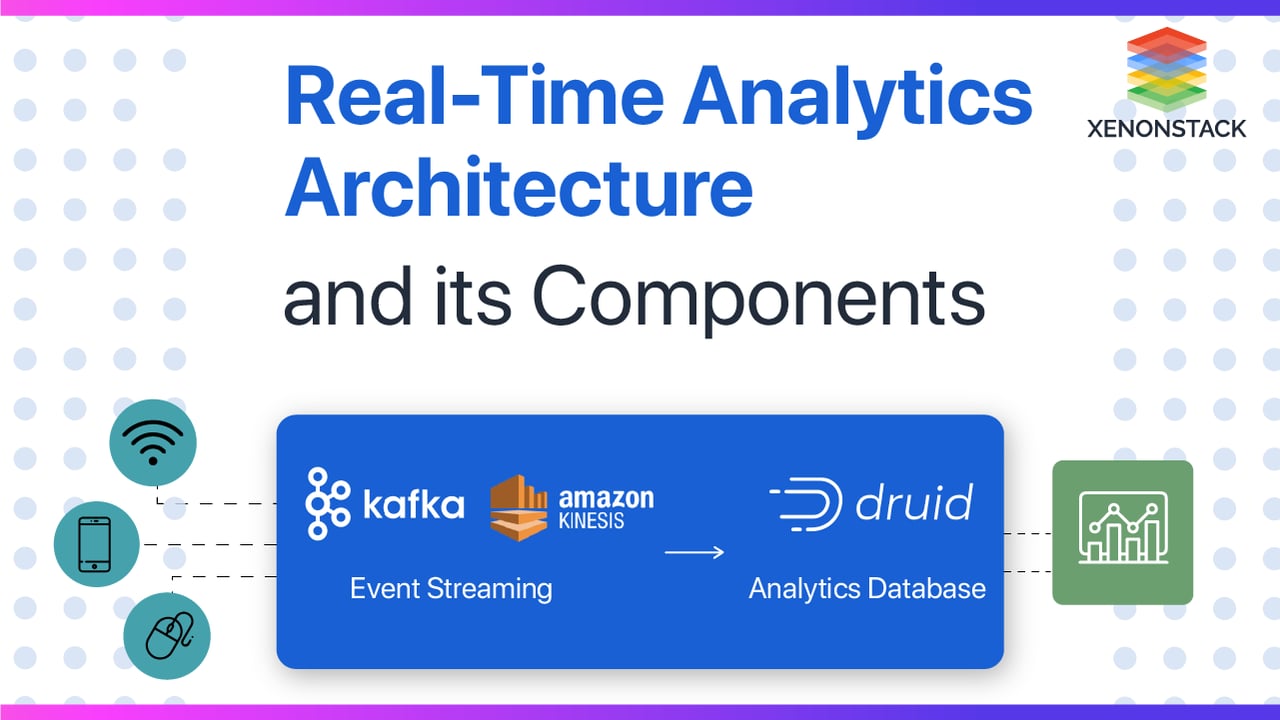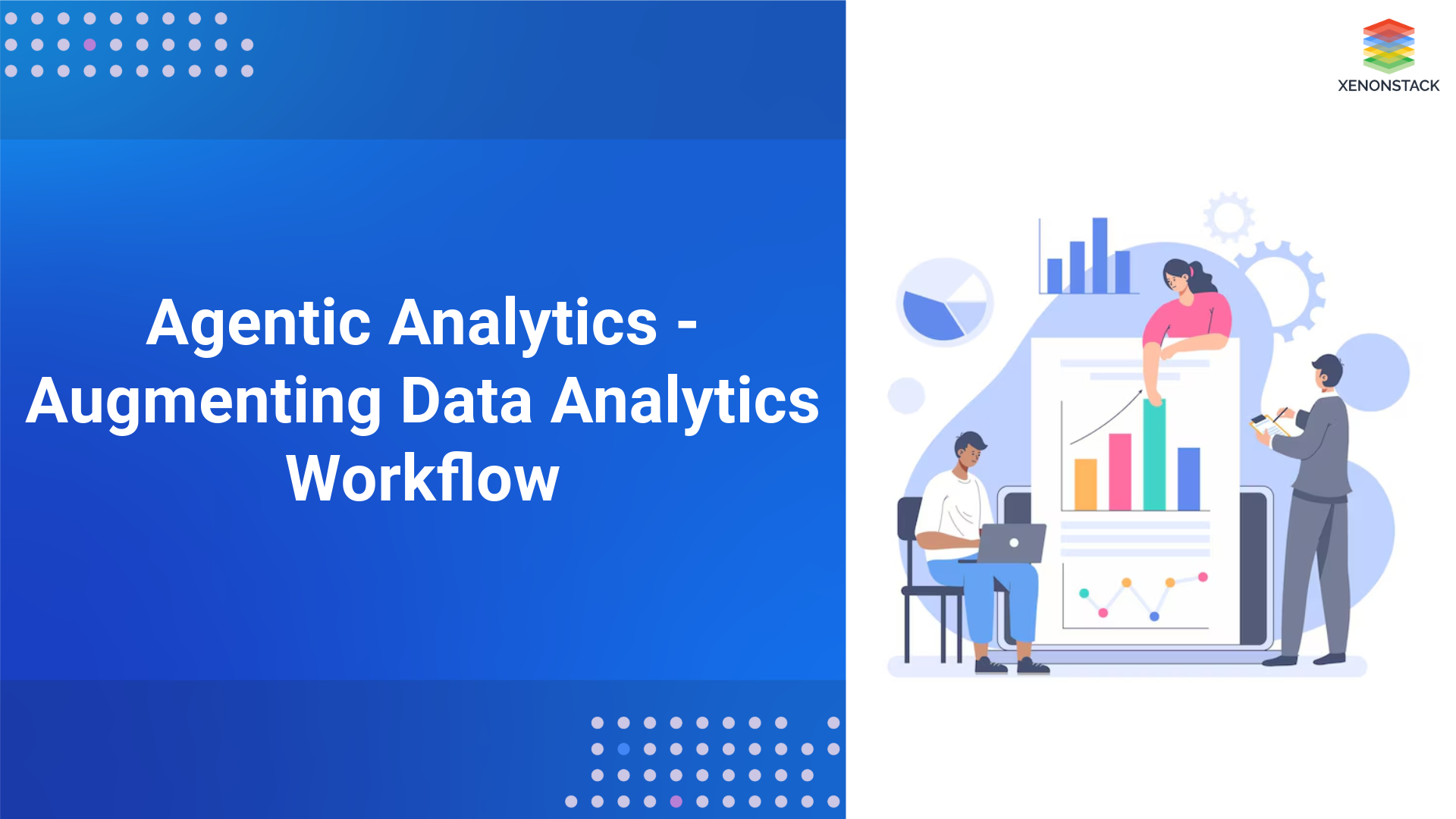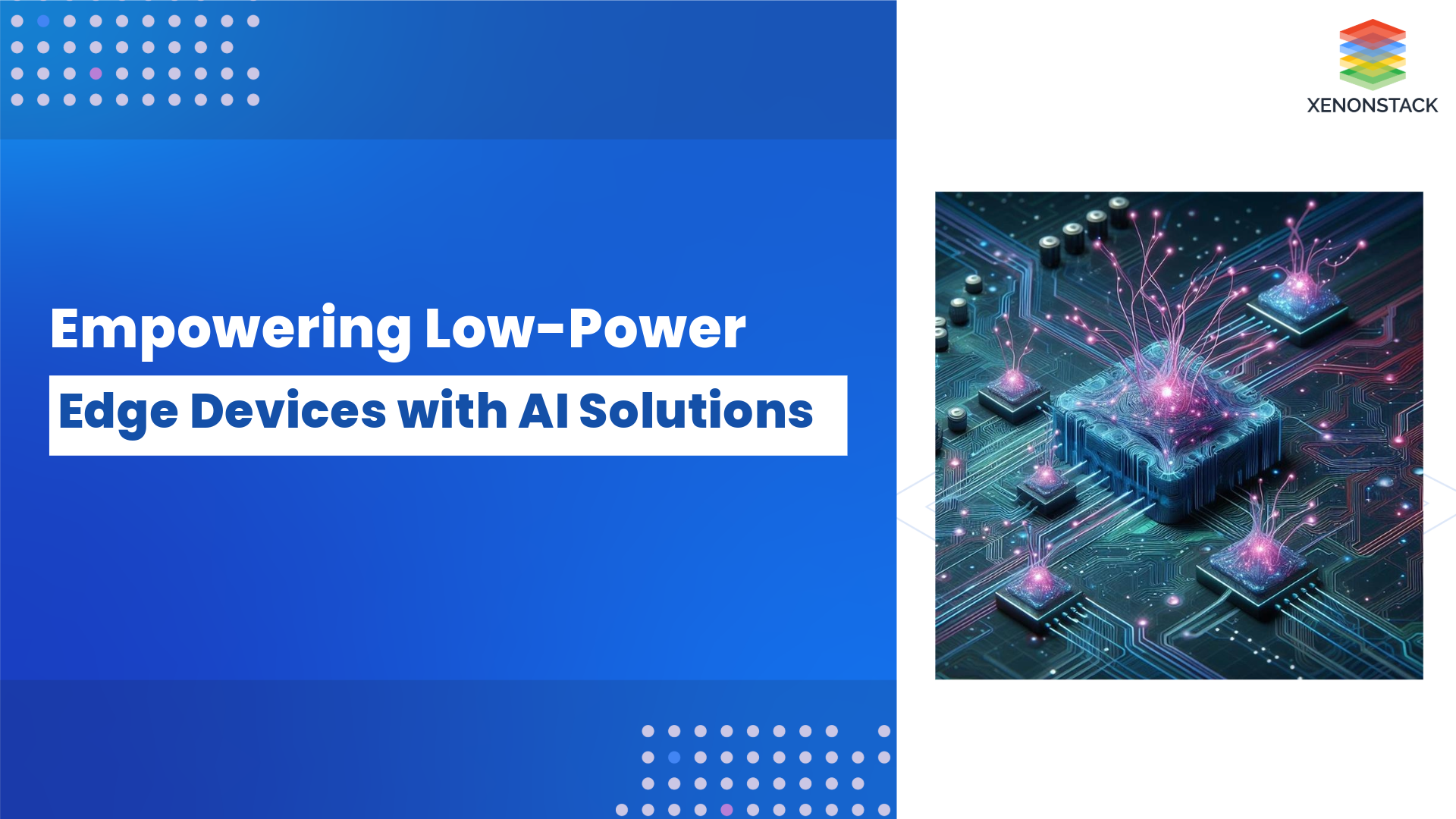
Introduction to Real-time Analytics
In today's competitive digital world, every company wants to stay ahead and try to compete with other competitors. Data is working for them as the most valuable asset. Real-time analytics has become vital for businesses to understand their data and rapidly come to wise conclusions.
The practice of processing and analyzing data as it is generated without any noticeable delay is known as real-time analytics. This enables companies to respond quickly to shifting market conditions, consumer requests, and other factors affecting their operations by gaining real-time insights into their data.
With real-time analytics architecture, businesses can receive real-time insights into their operations, which enables them to spot anomalies, respond to developing patterns, and optimize their processes. For instance, real-time analytics can be applied to supply chain operations optimization, website traffic monitoring, and fraud detection in financial transactions.
As organizations strive to make data-driven decisions in real-time, real-time analytics has become a crucial element of contemporary business operations. A Real-time analytics architecture is a powerful framework that allows companies to collect, process, and analyze data in real-time. This enables them to quickly adapt to changing market conditions and customer behavior and helps them make informed decisions that directly impact their bottom line.
Explore more about real-time analytics Use cases
Components of Real-time Analytics Architecture
Real-time analytics architecture empowers businesses to collect, process, and analyze data in real-time, enabling them to make swift data-driven decisions, gain deep insights into their operations, and outshine their industry competitors. This cutting-edge data processing architecture is the key to unlocking the potential of real-time data collection, processing, and analysis, providing businesses with the tools they need to stay ahead in today's fast-paced market.
To process and analyze big data effectively, businesses require a robust real-time analytics infrastructure. This infrastructure must be able to collect, process, and store data from various log files quickly and in an easily accessible manner. Gathering log data from multiple servers can be complex due to the high velocity of the data. Once processed, the data needs to be enriched with reference and lookup data before being imported into the destination database. The Real-Time Analytics architecture supporting this process must be resilient, with load-balancing and fail-over capabilities for uninterrupted performance.
The main elements of a typical real-time analytics architecture are as follows:
1. Data Sources
The first step in real-time analytics is gathering data from many sources, including social media feeds, sensors, online logs, and mobile apps. These sources produce essential data that must be immediately consumed and analyzed.
2. Data Processing
To extract insights, data must be processed in real-time after it has been gathered from multiple sources. This requires filtering, cleaning, and transformation to ensure the data is accurate and relevant for analysis.
Explore more about Real-Time Data Streaming
3. Data Storage
A vital element of the architecture for real-time analytics is data storage. It must be quick, scalable, and able to handle the massive amounts of data produced by many sources. Here are a few examples of popular data storage options for real-time data analytics architecture
-
In-memory Databases
These databases store and retrieve information quickly by storing data in the system's main memory. They are perfect for real-time analytics since they have minimal latency and can handle massive amounts of data.
-
Distributed File Systems
large volumes of data can be stored across a cluster of computers using distributed file systems, like the Hadoop Distributed File System (HDFS). As data volumes rise, it is simple to scale up storage capacity.
-
NoSQL Databases
NoSQL databases are non-relational databases that can store substantial amounts of unstructured and semi-structured data. They are frequently employed in real-time analytics applications and offer quick and flexible data processing.
For real-time analytics, scalable, quick storage solutions that can handle the large volumes of data produced by many data sources are needed. The data must be stored in a way that makes it simple to retrieve and analyze.
-
Analytics Engine
Implementing an analytics engine requires the ability of data processing, storage, and analysis techniques. The architecture must be designed to handle large volumes of data and provide real-time analytics capabilities. Businesses can build a scalable and robust analytics engine using cloud-based infrastructure and data platforms to provide a competitive advantage. The analytics engine is crucial to real-time analytics architecture, enabling businesses to make data-driven decisions and gain a competitive edge.
-
Visualization
Making the insights the analytics engine produces approachable to people is essential. Users are presented with the findings in an approach that is simple to understand and act upon using visualization tools like dashboards and reports.
These components work together seamlessly to enable organizations to gain real-time insights into their operations, improve decision-making, and gain a competitive advantage in their industry.
Importance of Real-time Analytics
Real-time analytics architecture provides several benefits to businesses. Real-time analytics architecture allows businesses to make informed decisions based on the latest data. Real-time analytics systems provide real-time insights that help businesses quickly respond to changing market conditions. Real-time analytics architecture also allows businesses to identify and resolve issues quickly.
The real-time analytics architecture is fundamental in the finance, healthcare, and transportation industries. In finance, real-time analytics systems are used for fraud detection and risk management. In healthcare, real-time analytics systems are used for patient monitoring and disease management. In transportation, real-time analytics systems are used for route optimization and predictive maintenance.
Real-time Analytics Architecture Design
-
Real-time analytics architecture design demands thorough consideration of all the components and the organization's unique needs and limits. Real-time analytics must be implemented using a different architecture and strategy than batch-based analytics. Along with other tools and technologies, this one can support the streaming and processing of enormous amounts of data. You rarely want to send raw source data regarding real-time analytics to your target systems. Most of the time, you need a data pipeline that begins with data integration and lets you modify the data while it is transmitted to the target.
-
The design of a real-time analytics architecture must consider each component and the organization's unique needs and limitations. Building a real-time analytics architecture starts with choosing which data sources to use. Finding the data sources pertinent to the organization's operations requires some research. These sources may be internal or external, including customer information, social media feeds, Internet of Things sensors, and transaction data.
-
After selecting the appropriate data sources, the following step is to build the data processing pipeline. To ensure the data's accuracy and suitability for analysis, the processes needed to filter, clean, and transform the data should be included in this pipeline. After processing, the data must be stored in a scalable and rapid storage solution that can handle the massive amounts of data generated by many data sources. It is essential to simplify retrieving and analyzing the data from this storage.
-
The real-time analytics architecture's brain, the analytics engine, uses various methods, including machine learning, statistical analysis, and data mining, to analyze data in real-time and generate insights. Based on these insights, decisions are made immediately. Finally, the analytics engine's insights should be delivered to users properly. Dashboards and reports are two visualization tools that can be used to do this.
-
Creating a real-time analytics architecture requires a thorough strategy that considers each of its constituent parts as well as the organization's specific requirements. By developing a real-time analytics architecture that meets its needs, an organization can gain real-time insights into its operations, enhance decision-making, and achieve a competitive advantage in its industry.
There are a few steps that need to be followed to implement the real-time analytics architecture:
-
Building a Proof-of-Concept
Building a proof-of-concept is crucial in implementing real-time analytics architecture. It validates the design, identifies issues, and gains stakeholder buy-in. It is a foundation for scaling up the architecture to handle larger data volumes. The proof-of-concept determines the suitability of technology, tools, and data sources, ensuring practicality and immediate insights. Constructing a real-time analytics architecture that delivers precise and timely insights requires a successful proof of concept.
-
Scaling Up the Architecture to Handle Larger Volumes of Data
As the volume of data increases, the real-time analytics architecture needs to scale up accordingly. There are several ways to scale up the architecture, such as adding more resources, vertical or horizontal scaling, and using cloud-based services. While scaling up the architecture, it is essential to consider the impact on performance and cost.
-
Ensuring Data Accuracy and Reliability
Real-time analytics architecture relies on data to generate insights. Ensuring data accuracy and reliability is crucial to avoid misleading insights. Implementing data validation and cleansing techniques can improve the accuracy of the data. Additionally, setting up automated data quality checks and monitoring can help to detect issues early.
-
Testing the Architecture for Performance and Scalability
Rigorous testing is necessary to ensure that the real-time analytics architecture can handle large volumes of data and perform efficiently. Testing the architecture for performance, scalability, and resilience is essential. Performance testing helps to identify the maximum ability and throughput of the system. Scalability testing helps to determine how well the system scales as the data volume increases. Resilience testing helps to identify how well the system can recover from failures and continue to operate.
By implementing these steps, it is possible to build a real-time analytics architecture that can generate valuable insights in real-time. However, it is essential to remember that real-time analytics architecture is not a one-time implementation. It requires continuous maintenance, monitoring, and optimization to remain accurate and efficient.
Batch and real-time processing are standard data processing methods with unique characteristics and applications. Taken From Article, Batch vs Real Time Processing
Use Cases of Real-time Analytics Architecture
Businesses across all industries—from retailers and manufacturers to financial services companies and healthcare institutions—find it challenging to keep up with the rapid data speed. To obtain the most critical business intelligence, near-real-time processing is essential because the value of this data can disappear within days, hours, minutes, or even seconds.
For example, outdated IoT (Internet of Things) data used to steer a driverless truck is useless and potentially dangerous. Like this, information about machine wear on a production line is discovered too late, after the machine has already failed.
There are a few examples of use cases where Real-Time Analytics Architecture is extremely helpful in resolving problems:
1. Retail and E-commerce
The real-time analytics architecture is crucial for retail and e-commerce businesses to offer a seamless and personalized customer experience while remaining competitive. It allows businesses to monitor customer behavior, streamline operations, and boost sales. Some use cases of real-time analytics architecture in the retail and e-commerce industry include personalized recommendations, inventory management, fraud detection, pricing, and customer service.
Real-time analytics architecture also allows retailers to optimize inventory levels, forecast demand, and modify inventory levels by analyzing sales data, ultimately lowering stockouts and boosting supply chain effectiveness. Fraud detection is also a significant concern for retailers, and real-time analytics architecture can help businesses detect fraud in real time by analyzing customer behavior, transaction data, and other relevant data sources.
2. IoT (Internet of Things) and Smart Cities
The real-time analytics architecture is becoming increasingly important in two areas - the Internet of Things (IoT) and smart cities. The IoT refers to a network of physical objects, such as household items and appliances, equipped with sensors and software to communicate and exchange data. Smart cities, on the other hand, are cities that employ IoT technology to improve the effectiveness of their services and promote sustainability.
The real-time analytics architecture is essential for optimizing manufacturing and logistics processes. One use is predictive maintenance, where IoT sensor data is analyzed in real-time to identify anomalies and probable failures, enabling proactive maintenance planning and minimizing downtime. Additionally employed in quality control, real-time analytics architecture enables manufacturers to swiftly identify and address quality issues, minimizing waste and enhancing product quality.
In inventory management, real-time analytics architecture provides insights and analytics to optimize inventory levels, reduce stockouts, and improve order fulfillment rates. This is particularly important for manufacturing and logistics companies with complex supply chains, which must manage inventory levels effectively to minimize costs while ensuring sufficient stock to fulfill orders. Real-time data analysis can help companies achieve this balance by analyzing data from inventory systems, supply chains, and demand forecasts.
Streaming Data Visualization gives users Real-Time Data Analytics to see the trends and patterns in the data to take action rapidly. Taken From Article, Real-Time Streaming Data Visualization
Challenges and Best Practices of Real-time Analytics
Real-time analytics architecture offers many benefits but comes with several challenges. Here are some of the critical challenges in implementing real-time analytics architecture:
1. Data Integration
Real-time analytics architecture requires integrating data from multiple sources, such as IoT sensors, social media, and transactional systems, in real time. This can be a complex process that requires expertise in data management and integration.
2. Scalability
Real-time analytics architecture must handle large volumes of data and scale to meet changing business needs. This requires a flexible and scalable infrastructure that can accommodate growth and changes in data volume and complexity.
3. Data Quality
Real-time analytics architecture depends on the quality of data. Data quality can result in accurate analysis, leading to correct decisions. Data quality can be affected by data completeness, accuracy, consistency, and timeliness.
4. Real-time Processing
Real-time analytics architecture requires real-time processing data, which requires a low-latency infrastructure and processing engines capable of handling large volumes of data in real time.
5. Security and Privacy
Real-time analytics architecture deals with sensitive and confidential data, which requires proper security measures to prevent unauthorized access, breaches, and data loss. Privacy regulations, such as GDPR and CCPA, add another layer of complexity to data management.
On the other hand, Real-time analytics architecture can be complex and challenging to implement, requiring careful planning and consideration of several factors. Here are some best practices for building and maintaining a real-time analytics architecture:
-
Define Clear Business Objectives and Use Cases
Establishing business objectives and use cases is crucial before implementing a real-time analytics infrastructure. The first step in this process is to find the key performance indicators (KPIs) critical to your company, such as sales, customer satisfaction, or manufacturing efficiency. By establishing clear business goals, you may concentrate on the data that matters most to your organization and ensure that your real-time analytics architecture supports those objectives.
-
Design a Scalable and Flexible Architecture
Real-time data processing involves large volumes of data that must be processed and analyzed quickly. Therefore, it is essential to design a scalable and flexible architecture that can handle the increasing volume of data over time. This involves using technologies like Apache Kafka, Apache Storm, or Apache Spark to process and analyze real-time data. Moreover, the architecture should be flexible enough to handle changes in data sources, formats, and processing requirements.
Know more about Continuous Intelligence with Realtime Analytics
Real-Time Analytics: Design and Architecture Synopsis
In conclusion, real-time analytics architecture is a powerful tool for businesses to gain real-time insights from data and make informed decisions. It provides a comprehensive framework for collecting, processing, analyzing, and visualizing real-time data from various sources, such as sensors, social media, and mobile devices. By leveraging machine learning, data mining, and statistical analysis techniques, real-time analytics architecture enables businesses to gain a competitive advantage by optimizing operations, reducing costs, and improving customer experience.
Real-time analytics architecture has several use cases across different industries and domains, including financial services, retail and e-commerce, healthcare, manufacturing, and logistics. It helps businesses to monitor and analyze customer behavior, detect anomalies, optimize production processes, and improve supply chain operations. The architecture can also help businesses to automate decision-making by triggering alerts and actions based on real-time data.
-
Explore Real Time Analytics Architecture
- Read here about Real-Time Retail Analytics Dashboard



